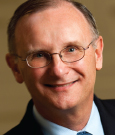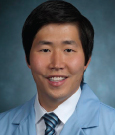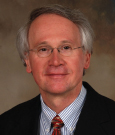The workforce numbers show a disturbing trend. According to a recent study by ASCO, by 2025, overall demand for oncology services is projected to grow by 40%, but physician supply is predicted to increase by only 25%, generating a shortage of 2,258 oncologists providing full-time equivalent clinical care.1 And that number could increase to 2,393 once the Patient Protection and Affordable Care Act is fully implemented in 2018. Exacerbating the problem are even greater shortages projected for primary care physicians, nurse practitioners, and physician assistants—medical professionals who will be needed to supplement care for the increasing numbers of patients with cancer as they transition to long-term survivorship care.
According to a study published in the Annals of Family Medicine,2 a confluence of circumstances led by population growth, an aging population, and health insurance expansion will drive the demand for additional primary care physicians to a staggering 52,000 by 2025. In addition, the already significant shortage of nurses in the United States is expected to top 1 million in just the next 5 years.3
The impending increasing demand for oncology services—by 2030, the number of new cancer cases will rise by 45% to 2.3 million a year, and by 2022, the number of cancer survivors, now at 14 million, will grow to 18 million4—coupled with the looming shortfall of oncologists as well as specialists from other medical disciplines raises the unsettling question: Who will take care of people will cancer?
Finding Solutions
“That is the key question, and the medical community at large has to figure out a solution to this issue,” said Richard L. Schilsky, MD, FACP, FASCO, Chief Medical Officer of ASCO. “What can we do? There are really only two kinds of solutions that can be pursued. One is hiring and using advanced practice providers in our offices and clinics. We need help to train these professionals in the practice of oncology, and it is ASCO’s responsibility to work with the professional societies that support advanced practice providers to provide a training program and curricula so they are well trained in the needs of cancer patients. And the other solution is to encourage more doctors to enter the field of oncology.”
To provide advanced practice providers with the educational resources necessary to meet the increasing demand for team-based oncology care and help mitigate the shortage of oncologists, ASCO University® issued ASCO’s Curricula for Advanced Practice Providers (ACAPP™) in 2013 and updated the program’s courses earlier this year.5 The program also includes an important module for oncologists on team-based care. ASCO is also working with medical schools to help them develop comprehensive curricula in cancer care.
“We had a meeting with the deans of medical education at many of the medical schools as well as with the Association of American Medical Colleges to explore the idea of working together to develop a better, more comprehensive, and more organized cancer curriculum, and they were receptive to the idea,” said Dr. Schilsky.
“We are optimistic that we will be able to continue to work with them to achieve that goal,” he continued. “We hope working with the medical schools this way will expose more medical students to patients with cancer during the course of their training and perhaps stimulate their interest in pursuing careers in oncology.”
Bridging the Knowledge Gap
According to Dr. Schilsky, ASCO is also reaching out to other medical societies to encourage the development of continuing education programs on the specific needs of patients with cancer to provide primary care physicians and specialists from various medical disciplines with the knowledge to better manage the health care of cancer survivors. This effort may help reverse findings showing that many internists feel ill-equipped to care for cancer survivors.
In a survey of 1,100 general internists across the United States to determine their attitudes and knowledge about the care of adult survivors of childhood cancer, on average, internists reported being “somewhat uncomfortable” caring for childhood cancer survivors and only 36.9%, 27%, and 25% of respondents said they were “somewhat comfortable” or “comfortable” caring for survivors of Hodgkin lymphoma, acute lymphoblastic leukemia, and osteosarcoma, respectively.6
Only 61 respondents said they preferred to care for childhood cancer survivors independently, with 84% preferring to work in collaboration with a cancer center–based physician or a long-term follow-up clinic. And 10.5% said they would refer survivors to a cancer center–based physician, long-term follow-up program, or another primary care physician. A large majority (72%) of survey participants said they had never received a survivorship care treatment summary—perhaps a contributing factor to their discomfort level.
“General internists are very thoughtful and knowledgeable about medicine, but I don’t think we are given the proper education, either in medical school or during residency, to learn about cancer survivorship care or the late effects from treatment,” said Eugene Suh, MD, first author of the study and Assistant Professor in the Division of Pediatric Hematology & Oncology at Loyola University Chicago Stritch School of Medicine. “In terms of the resources [internists] are provided, it is partly our fault as oncologists for not consistently providing the proper guidelines [for survivorship care] or the proper communication.”
Dr. Schilsky agrees. “We have an obligation as oncologists to complete and provide treatment summary survivorship care plans to our patients so they can carry that information to their primary care physicians,” he said.
Following Survivors for Life
Although every patient with cancer treated at the Greenville Health System’s Cancer Institute in Greenville, South Carolina, gets a survivorship care plan once treatment is completed, Medical Director W. Larry Gluck, MD, said it is the hospital’s intention to follow survivors for their “entire lifetime” to monitor long-term treatment side effects and the initiation of secondary cancers. The ongoing surveillance is among myriad services provided by the health system’s Center for Integrative Oncology and Survivorship, a patient-centered program Dr. Gluck launched in 2011 to integrate evidenced-based complementary therapies with traditional oncology care to meet the physical and psychosocial needs of cancer survivors.
“I tell all my patients that the cancer institute will follow them for life, and this notion is a paradigm shift for me,” said Dr. Gluck. “I saw patients returning to their primary care providers who had varying degrees of interest in their care. Primary care physicians do not have the training to look for delayed side effects that are common with the complex therapies we deliver today, so it is incumbent upon oncologists to take care of any health issue that is cancer-related. My philosophy is that we own that cancer for life.”
To ensure that the Cancer Institute is adequately staffed to manage the care of both newly diagnosed patients and long-term survivors, Dr. Gluck is using greater numbers of highly trained certified nurse practitioners and physician assistants to meet the demand of a more team-based model of oncology care. He is also working with local universities and medical schools on building comprehensive oncology curricula to increase the supply of oncologists and advanced practice providers.
Improving Efficiency of Care
The way cancer therapies are delivered in the future may also help offset the projected oncology workforce shortage. “Many of the newer therapeutics are oral medications that patients can self-administer at home, so that means less demand on nursing time for the administration of therapy in an office practice or clinic,” said Michael P. Kosty, MD, FACP, FASCO, a member of ASCO’s Workforce Advisory Group and Director of the Scripps Green Cancer Center in La Jolla, California.
“Certainly, physicians and nurses are needed to manage treatment toxicities,” he said. “But the increasing development of oral agents was something we couldn’t have predicted 5 years ago when we started examining the workforce shortage issue.”
Striking a Geographic Balance
Perhaps an even more challenging problem to solve than the overall shortage of medical oncologists to preserve access to quality care is the imbalance in the geographic distribution of absolute numbers of oncologists throughout the country. According to ASCO’s report, The State of Cancer Care in America: 2014, nearly 97% of oncologists practice in urban areas of the country and about 3% practice in rural regions,4 where the U.S. Census Bureau estimates 20% of Americans live. The report also noted that more than 70% (2,067) of the U.S. counties ASCO analyzed had no medical oncologists at all.
“The real threat to access to care is the dwindling numbers of oncology practices in smaller communities,” said Dr. Schilsky.
Leveraging Available Interventions
Since the causes of the projected oncology workforce shortage are many (including changes in physician retirement rates—in 2008, the proportion of oncologists 64 years of age and older surpassed the proportion under 40 years of age for the first time4—and physician burnout), it will take a multifaceted approach to solve the problem, said Dr. Schilsky.
“This is a complicated issue from so many angles, and the problem is not going to be solved by ASCO alone. It is going to be solved by ASCO working in concert with the whole medical community, because at some point every doctor will come in contact with a cancer survivor in his or her practice,” said Dr. Schilsky.
He continued, “We will need to have better communication among all medical professionals and the development of a comprehensive, interconnected, interoperable electronic medical record system to ensure that wherever a cancer survivor goes for care, the physician will have complete details of that patient’s cancer and its treatment.”
By leveraging myriad interventions, including expanding the use of advanced practitioners in oncology practices and clinics, encouraging more medical students to specialize in oncology, collaborating with primary care physicians for the coordination of care of patients with cancer, monitoring and developing strategies for preventing physician burnout, and utilizing big data technology to advance quality of care, it will be possible to ensure that the growing numbers of patients with cancer and long-term survivors receive the care they need from qualified and knowledgeable providers, said Dr. Schilsky. ■
Disclosure: Dr. Schilsky reported no potential conflicts of interest.
References
1. Yang W, Williams JH, Hogan PF, et al: Projected supply of and demand for oncologists and radiation oncologists through 2025: An aging, better-insured population will result in shortage. J Oncol Pract 10:39-45, 2014.
2. Petterson SM, Liaw WR, Phillips RL, et al: Projecting US primary care physician workforce needs: 2010-2025. Ann Fam Med 10:503-509, 2012.
3. Health Resources and Services Administration: What is behind HRSA’s projected supply, demand, and shortage of registered nurses? Rockville, Maryland; U.S. Department of Health and Human Services, 2006.
4. American Society of Clinical Oncology: State of Cancer Care in America: 2014. Available at www.asco.org/practice-research/cancer-care-america. Accessed July 28, 2014.
5. American Society of Clinical Oncology: ASCO University®’s 2014 Curricula for Advanced Practice Practitioners (ACAPP™). ASCO Daily News, May 30, 2014. Available at am.asco.org/asco-university’s-2014-curricula-advanced-practice-providers-acapp. Accessed July 28, 2014.
6. Suh E, Daugherty CK, Wroblewski K, et al: General internists’ preferences and knowledge about the care of adult survivors of childhood cancer: A cross-sectional survey. Ann Intern Med 160:11-17, 2014.





